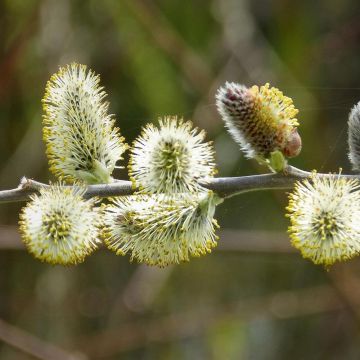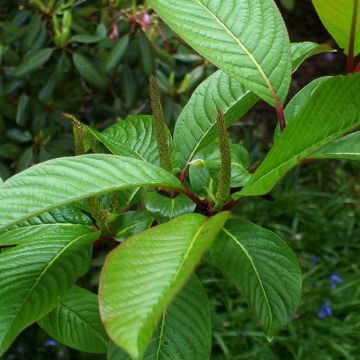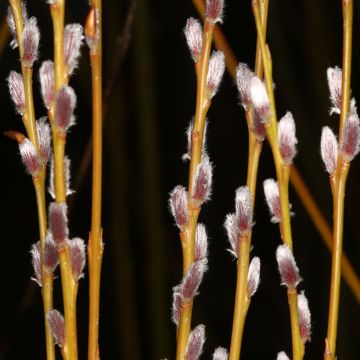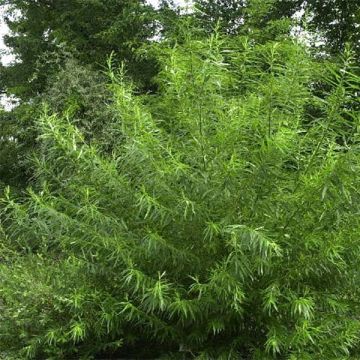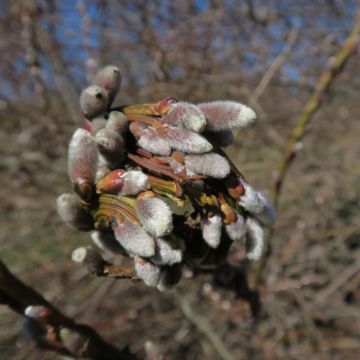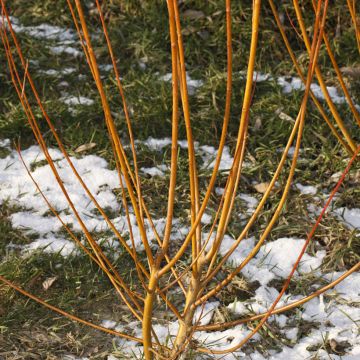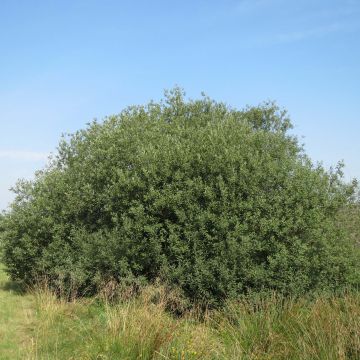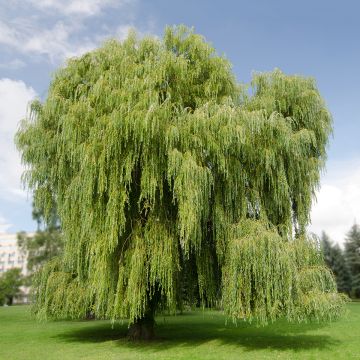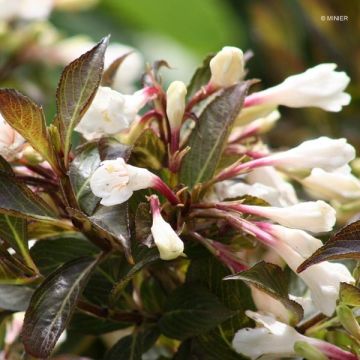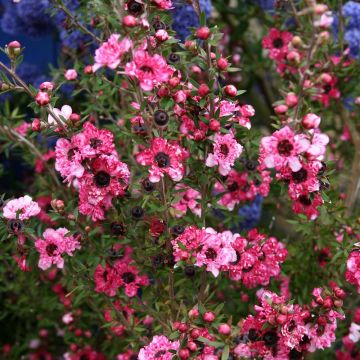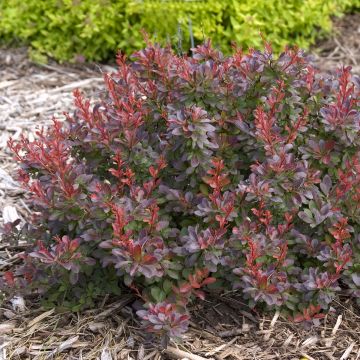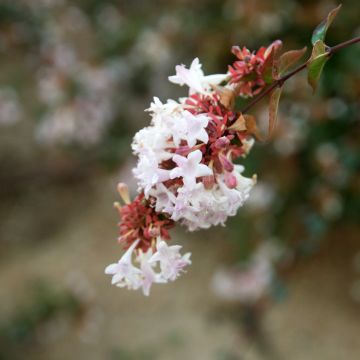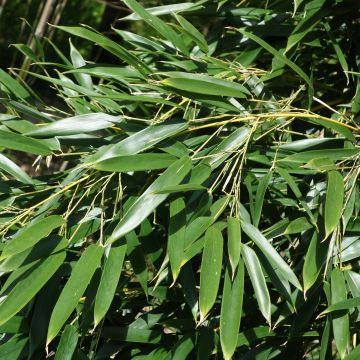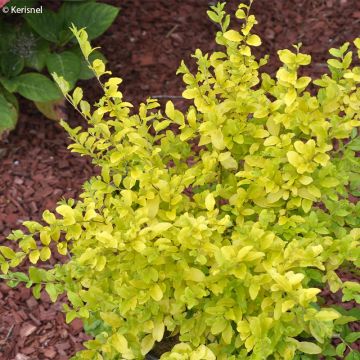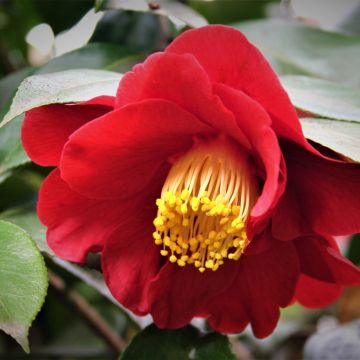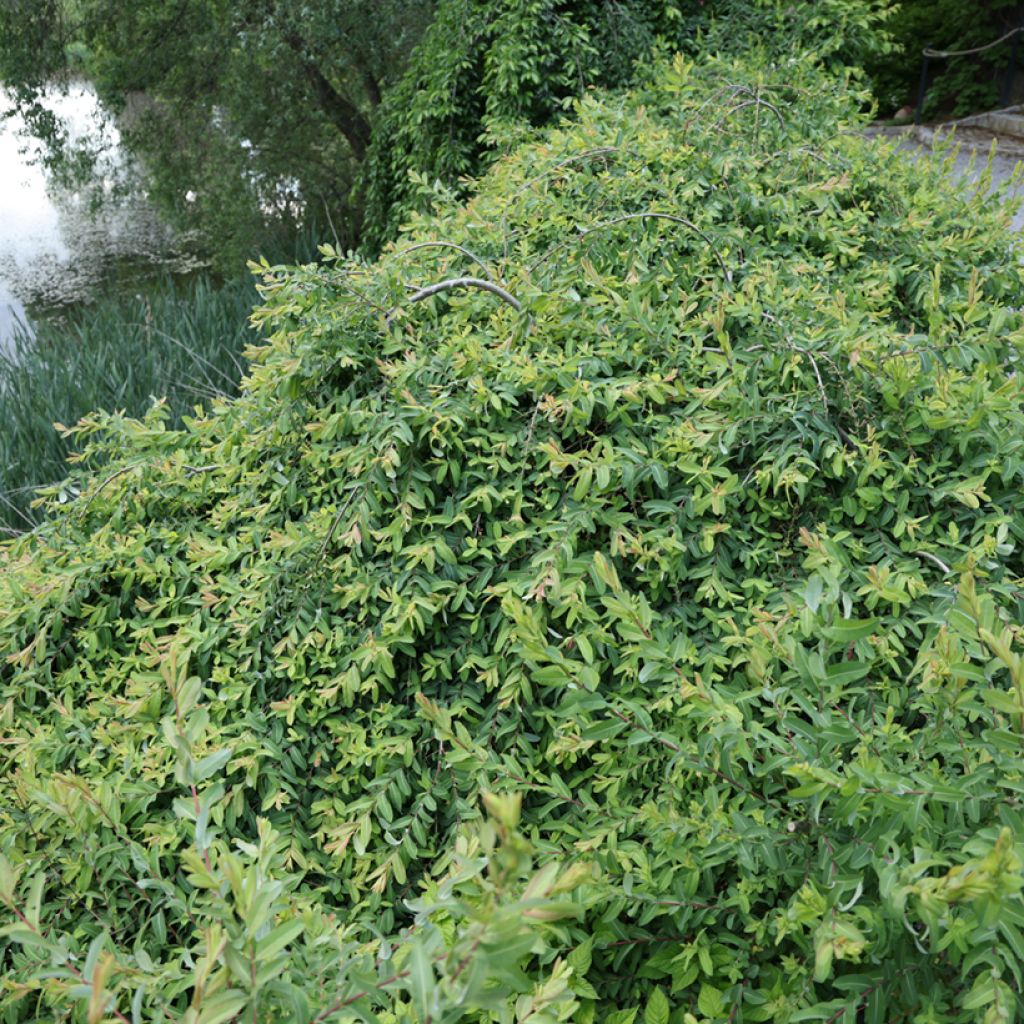

Salix integra Pendula - Dappled Willow
Salix integra Pendula - Dappled Willow
Salix integra Pendula
Dappled Willow, Japanese Willow
This item cannot be shipped to the selected country
Oversize package delivery charge from €6.90
Delivery to Corse prohibited
More information
Schedule delivery date,
and select date in basket
This plant carries a 24 months recovery warranty
More information
We guarantee the quality of our plants for a full growing cycle, and will replace at our expense any plant that fails to recover under normal climatic and planting conditions.
Oversize package: home delivery by special carrier from €6.90 per order..
Express home delivery from €8.90.
Delivery to Corse prohibited: UE law prohibits the import of this plant from mainland France to Corse as part of the fight against Xylella fastidiosa. Please accept our sincere apologies.
More information
Does this plant fit my garden?
Set up your Plantfit profile →
Description
Salix integra 'Pendula' is a dwarf willow often grafted onto a stem that develops a weeping habit. Its long, flexible branches covered with fine green leaves create a small, extremely decorative cascade of foliage. This small tree is interesting in autumn, adorned with yellow leaves, and in winter, its bare branches, which turn more reddish, are not without appeal. This perfectly hardy, small deciduous willow can be easily grown in the ground or in a container on the terrace. Its only requirement is fertile soil that remains moist.
Salix integra, belonging to the Salicaceae family, is native to the Far East. It is found in the wild in Russia, northern China, Korea, and Japan. It is a very cold-resistant bush, preferring damp to moist locations, and is commonly found in natural wet meadows, valleys, and along waterways. It is perfectly suited to humid temperate climates, even cold ones.
Salix integra 'Pendula' is also known as the weeping pommel willow or weeping shrimp willow. It is grafted onto a stem of variable height. Ultimately, this small tree will reach between 1.25 m and 1.75 m in height. The width of its crown depends on maintenance pruning, generally reaching 1 to 1.5 m in diameter. The branches of this willow spread at the top of the trunk and then cascade down to the ground. Bright green in spring, they take on a reddish-brown hue in winter. In spring, they bear discreet flowers before the leaves, which are grouped in slender spikes. The leaves are soft, narrowly elliptical to oblong, measuring 3 to 6 cm long. Their colour is light green on the upper side, with a whitish underside. They turn yellow in autumn before falling.
Unobtrusive and infinitely graceful, Salix integra 'Pendula' is perfect for decorating contemporary terraces and small gardens. It can be planted as a solitary specimen in the centre of a small dedicated flower bed. To surround it, one might plant Japanese grass 'Naomi' or Ophiopogons for example. The variegated ground ivy will also form an elegant and luminous ground cover around its silhouette. This dwarf weeping willow, like all willows, is irreplaceable near water features and in damp soils.
Report an error about the product description
Plant habit
Flowering
Foliage
Botanical data
Salix
integra
Pendula
Salicaceae
Dappled Willow, Japanese Willow
Salix multinervis Savign.
Cultivar or hybrid
Other Willow - Salix
Planting and care
Plant the Weeping Willow Salix integra 'Pendula' in full sun or partial shade. It is not very demanding regarding pH and the nature of the soil, which can be slightly acidic, neutral, or slightly calcareous. However, it cannot tolerate any drought. On the other hand, it copes very well with consistently moist and even waterlogged soils. The ideal planting mix is half potting compost and half garden soil. It is very hardy, down to -23°C. To achieve a dense and harmonious crown, we recommend pruning all the branches before the vegetation resumes (March), leaving 2 to 4 buds. In summer, a number of strong and healthy shoots will develop. Thanks to this severe pruning, you will limit the width of the crown.
Planting period
Intended location
Care
This item has not been reviewed yet - be the first to leave a review about it.
Hedge shrubs
Haven't found what you were looking for?
Hardiness is the lowest winter temperature a plant can endure without suffering serious damage or even dying. However, hardiness is affected by location (a sheltered area, such as a patio), protection (winter cover) and soil type (hardiness is improved by well-drained soil).

Photo Sharing Terms & Conditions
In order to encourage gardeners to interact and share their experiences, Promesse de fleurs offers various media enabling content to be uploaded onto its Site - in particular via the ‘Photo sharing’ module.
The User agrees to refrain from:
- Posting any content that is illegal, prejudicial, insulting, racist, inciteful to hatred, revisionist, contrary to public decency, that infringes on privacy or on the privacy rights of third parties, in particular the publicity rights of persons and goods, intellectual property rights, or the right to privacy.
- Submitting content on behalf of a third party;
- Impersonate the identity of a third party and/or publish any personal information about a third party;
In general, the User undertakes to refrain from any unethical behaviour.
All Content (in particular text, comments, files, images, photos, videos, creative works, etc.), which may be subject to property or intellectual property rights, image or other private rights, shall remain the property of the User, subject to the limited rights granted by the terms of the licence granted by Promesse de fleurs as stated below. Users are at liberty to publish or not to publish such Content on the Site, notably via the ‘Photo Sharing’ facility, and accept that this Content shall be made public and freely accessible, notably on the Internet.
Users further acknowledge, undertake to have ,and guarantee that they hold all necessary rights and permissions to publish such material on the Site, in particular with regard to the legislation in force pertaining to any privacy, property, intellectual property, image, or contractual rights, or rights of any other nature. By publishing such Content on the Site, Users acknowledge accepting full liability as publishers of the Content within the meaning of the law, and grant Promesse de fleurs, free of charge, an inclusive, worldwide licence for the said Content for the entire duration of its publication, including all reproduction, representation, up/downloading, displaying, performing, transmission, and storage rights.
Users also grant permission for their name to be linked to the Content and accept that this link may not always be made available.
By engaging in posting material, Users consent to their Content becoming automatically accessible on the Internet, in particular on other sites and/or blogs and/or web pages of the Promesse de fleurs site, including in particular social pages and the Promesse de fleurs catalogue.
Users may secure the removal of entrusted content free of charge by issuing a simple request via our contact form.
The flowering period indicated on our website applies to countries and regions located in USDA zone 8 (France, the United Kingdom, Ireland, the Netherlands, etc.)
It will vary according to where you live:
- In zones 9 to 10 (Italy, Spain, Greece, etc.), flowering will occur about 2 to 4 weeks earlier.
- In zones 6 to 7 (Germany, Poland, Slovenia, and lower mountainous regions), flowering will be delayed by 2 to 3 weeks.
- In zone 5 (Central Europe, Scandinavia), blooming will be delayed by 3 to 5 weeks.
In temperate climates, pruning of spring-flowering shrubs (forsythia, spireas, etc.) should be done just after flowering.
Pruning of summer-flowering shrubs (Indian Lilac, Perovskia, etc.) can be done in winter or spring.
In cold regions as well as with frost-sensitive plants, avoid pruning too early when severe frosts may still occur.
The planting period indicated on our website applies to countries and regions located in USDA zone 8 (France, United Kingdom, Ireland, Netherlands).
It will vary according to where you live:
- In Mediterranean zones (Marseille, Madrid, Milan, etc.), autumn and winter are the best planting periods.
- In continental zones (Strasbourg, Munich, Vienna, etc.), delay planting by 2 to 3 weeks in spring and bring it forward by 2 to 4 weeks in autumn.
- In mountainous regions (the Alps, Pyrenees, Carpathians, etc.), it is best to plant in late spring (May-June) or late summer (August-September).
The harvesting period indicated on our website applies to countries and regions in USDA zone 8 (France, England, Ireland, the Netherlands).
In colder areas (Scandinavia, Poland, Austria...) fruit and vegetable harvests are likely to be delayed by 3-4 weeks.
In warmer areas (Italy, Spain, Greece, etc.), harvesting will probably take place earlier, depending on weather conditions.
The sowing periods indicated on our website apply to countries and regions within USDA Zone 8 (France, UK, Ireland, Netherlands).
In colder areas (Scandinavia, Poland, Austria...), delay any outdoor sowing by 3-4 weeks, or sow under glass.
In warmer climes (Italy, Spain, Greece, etc.), bring outdoor sowing forward by a few weeks.

































